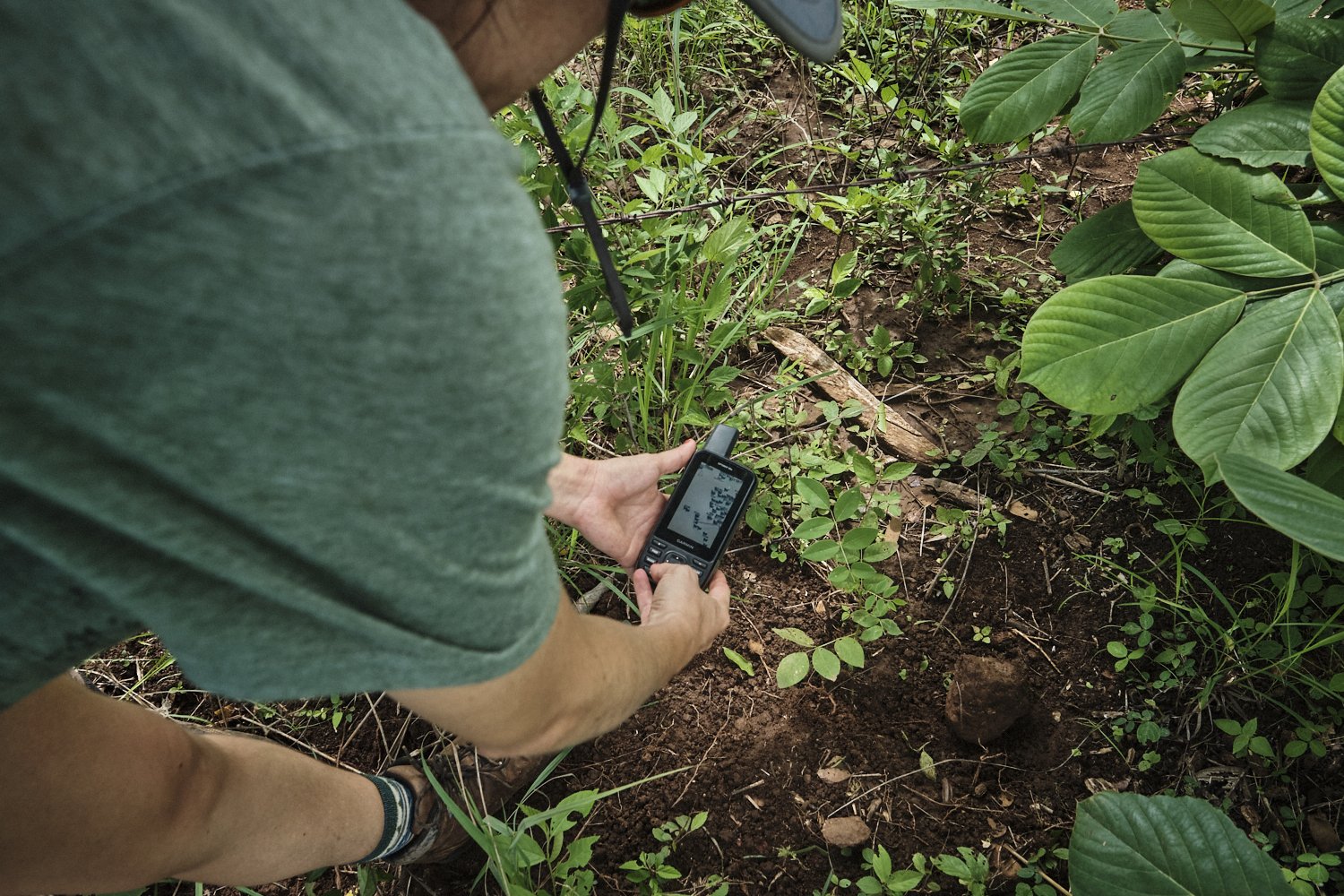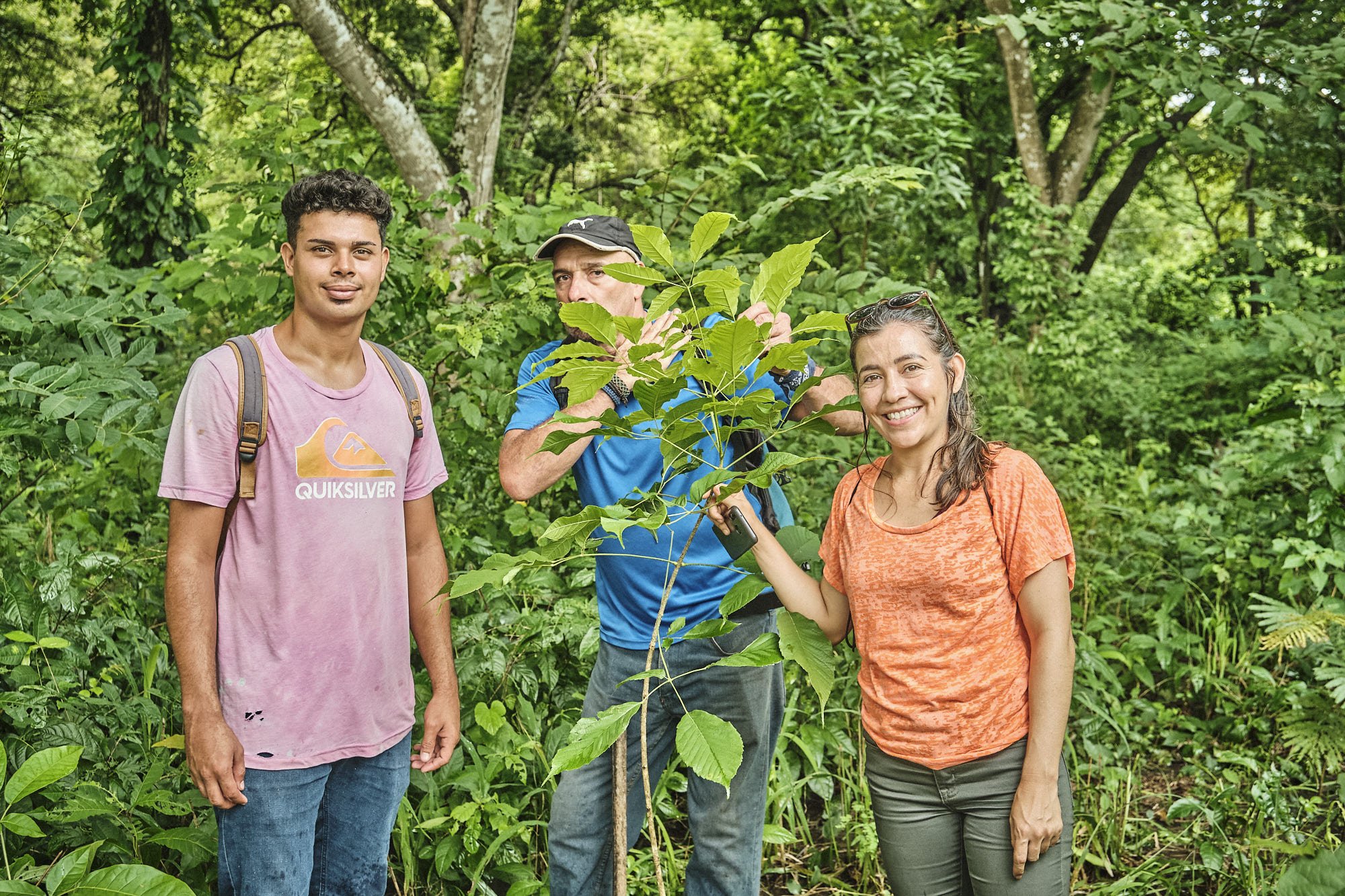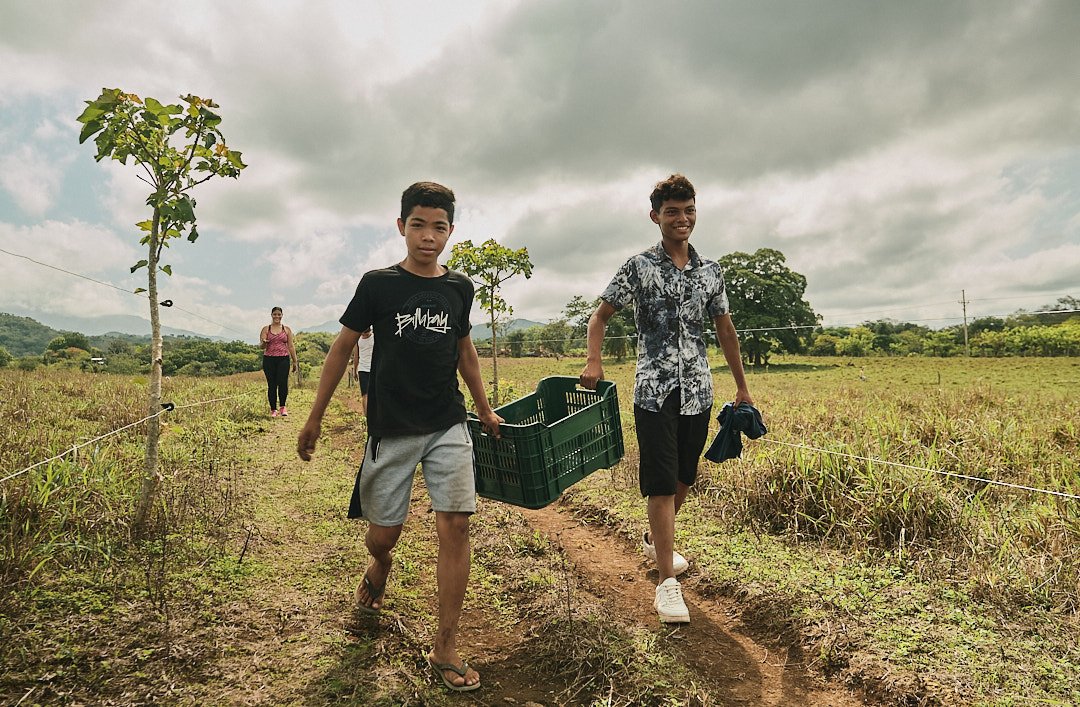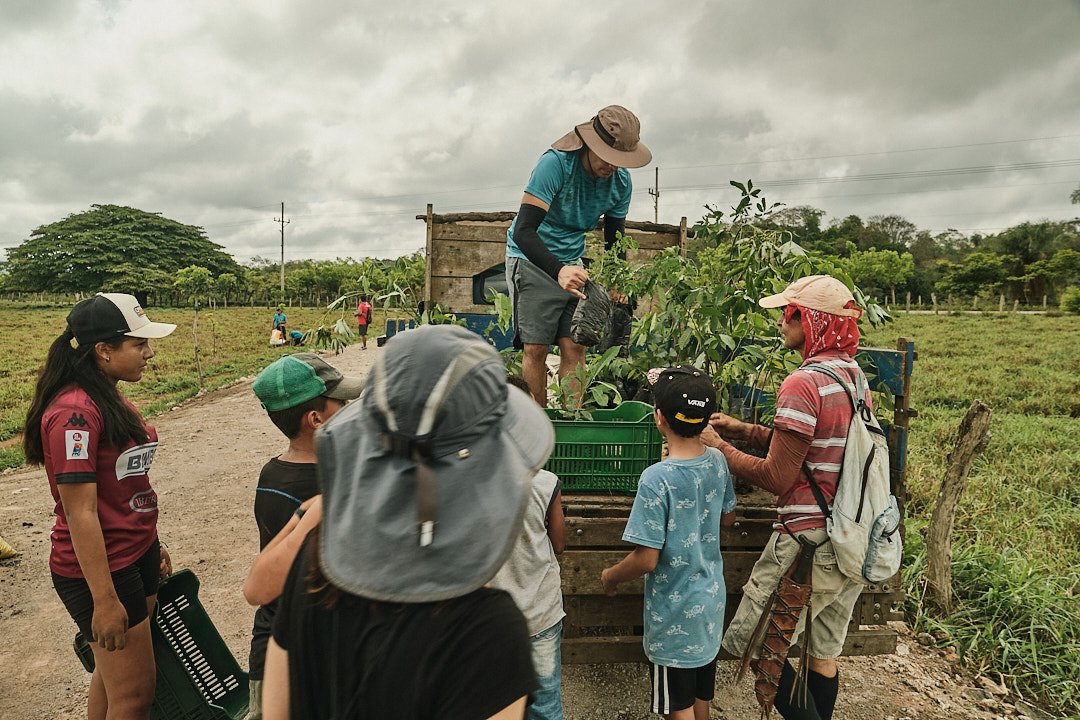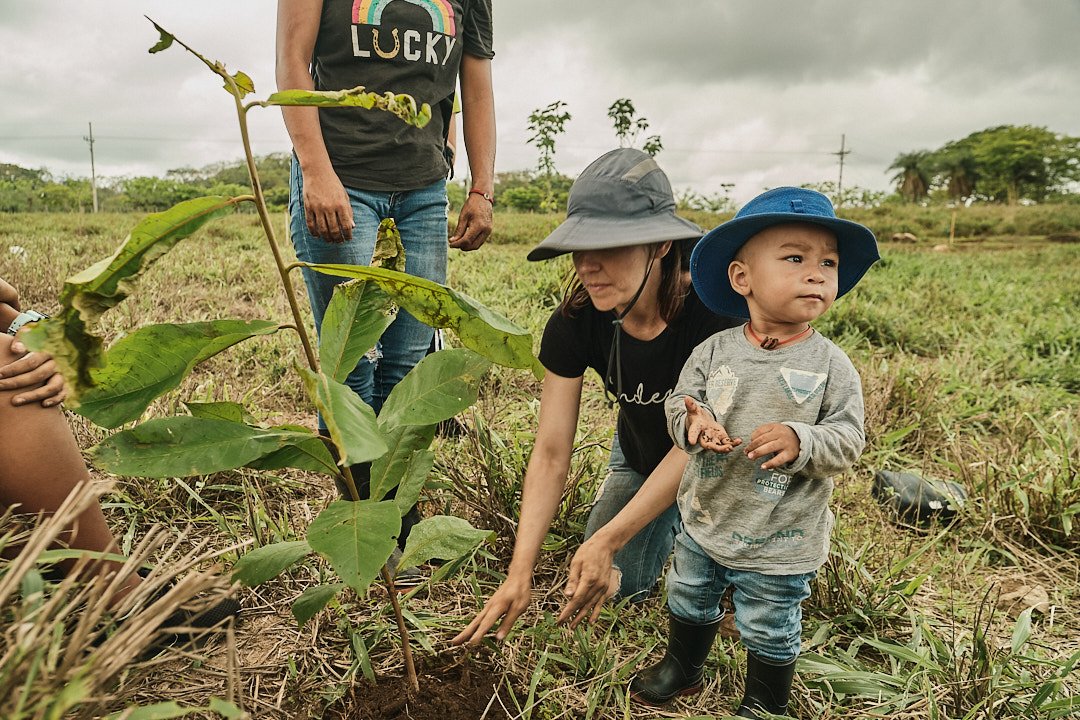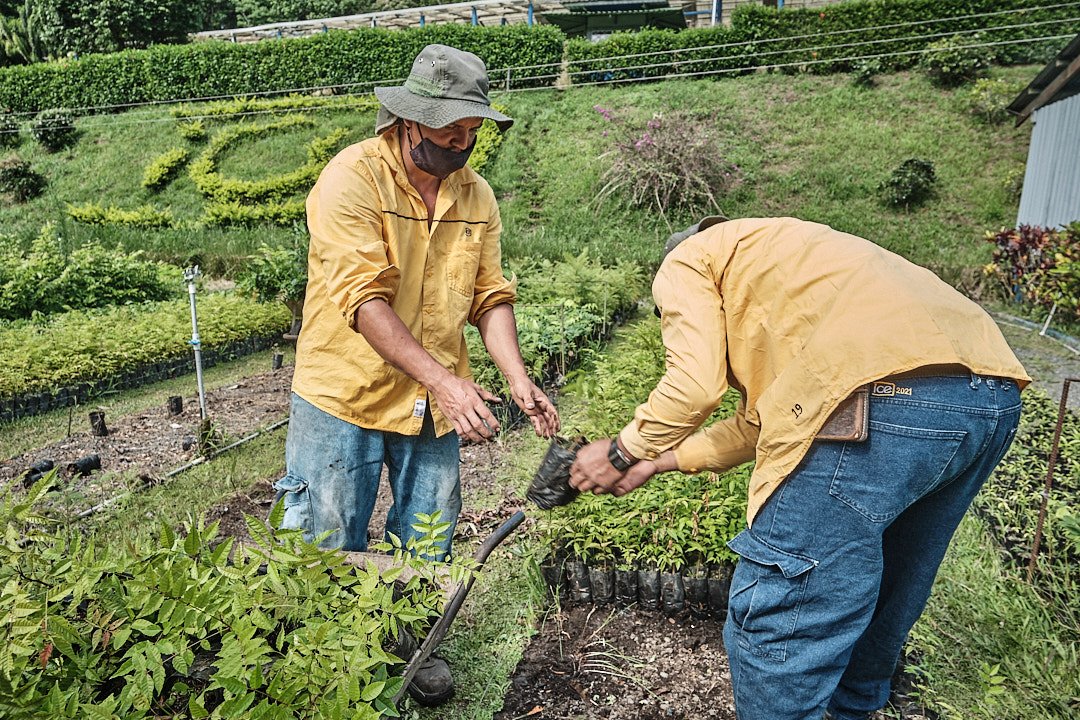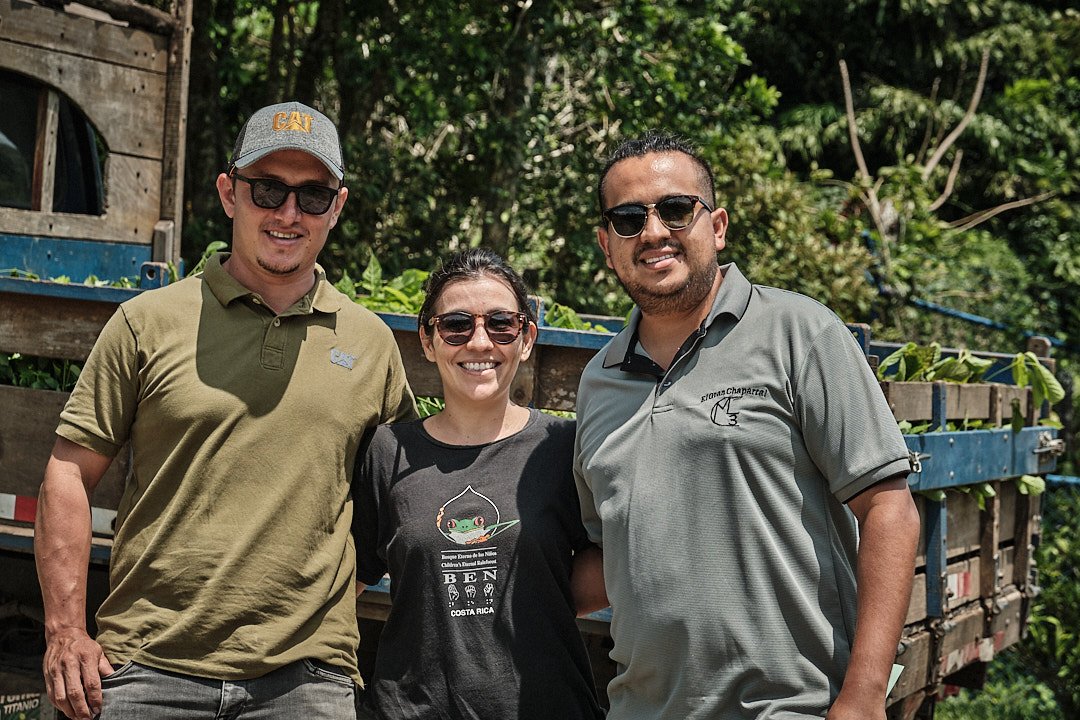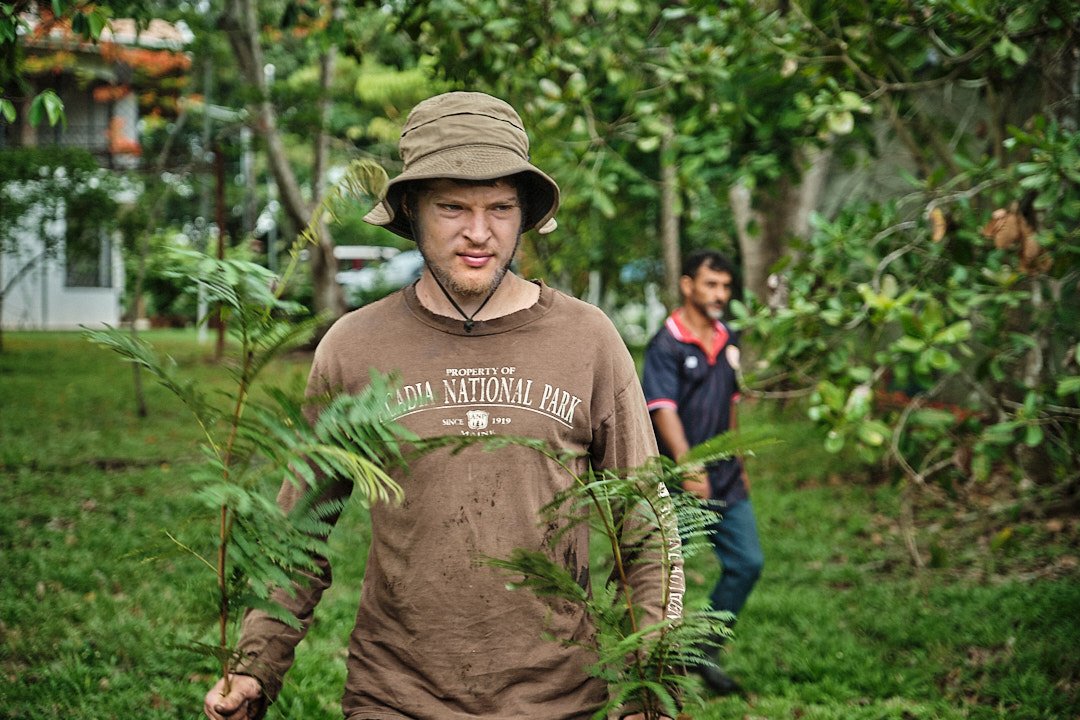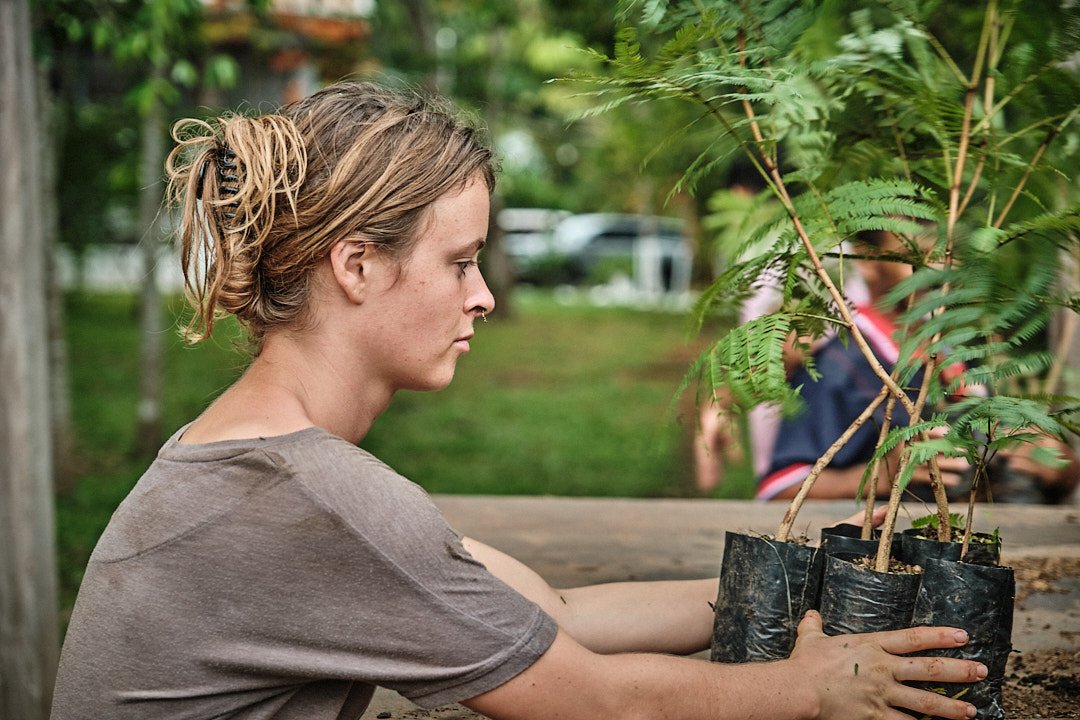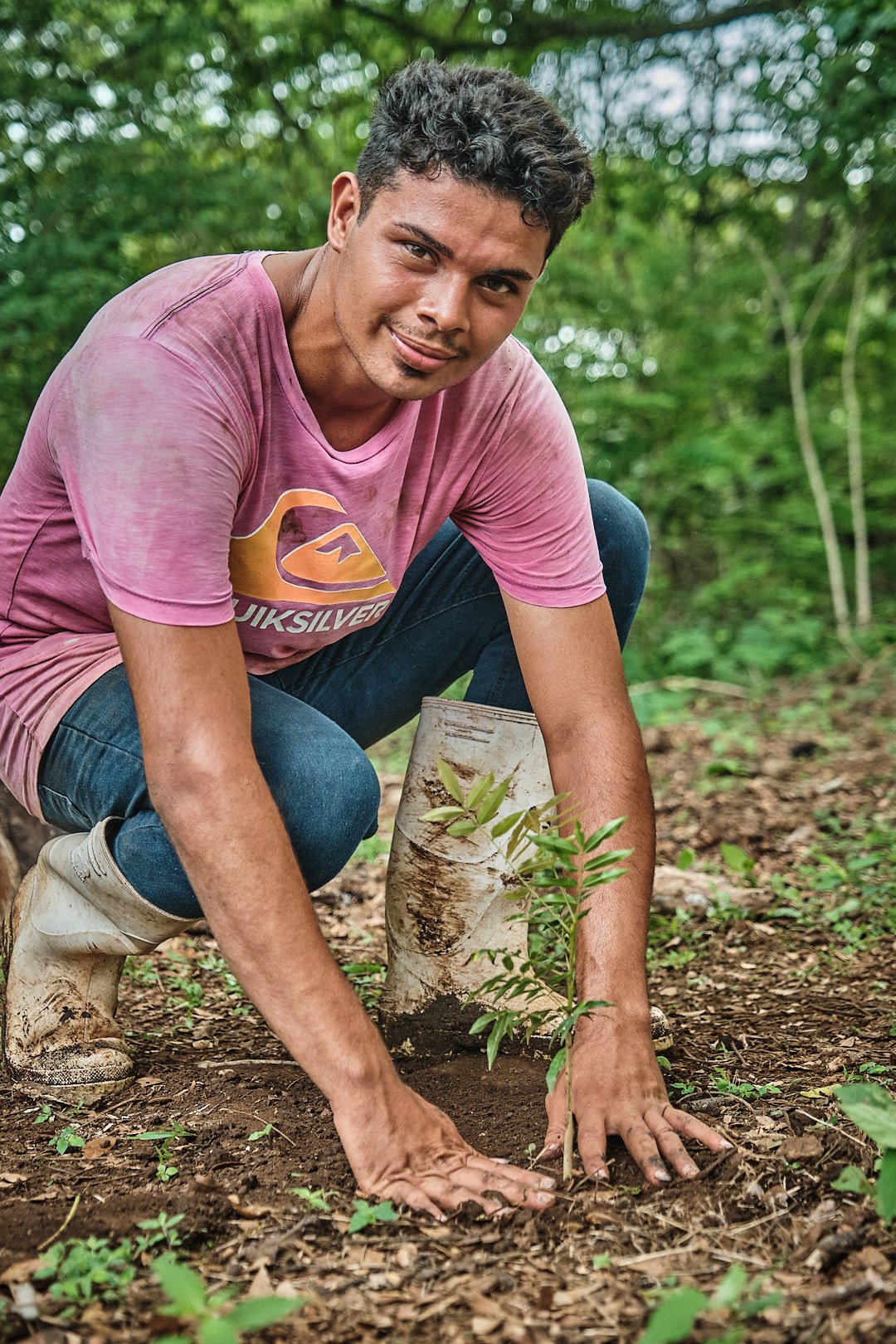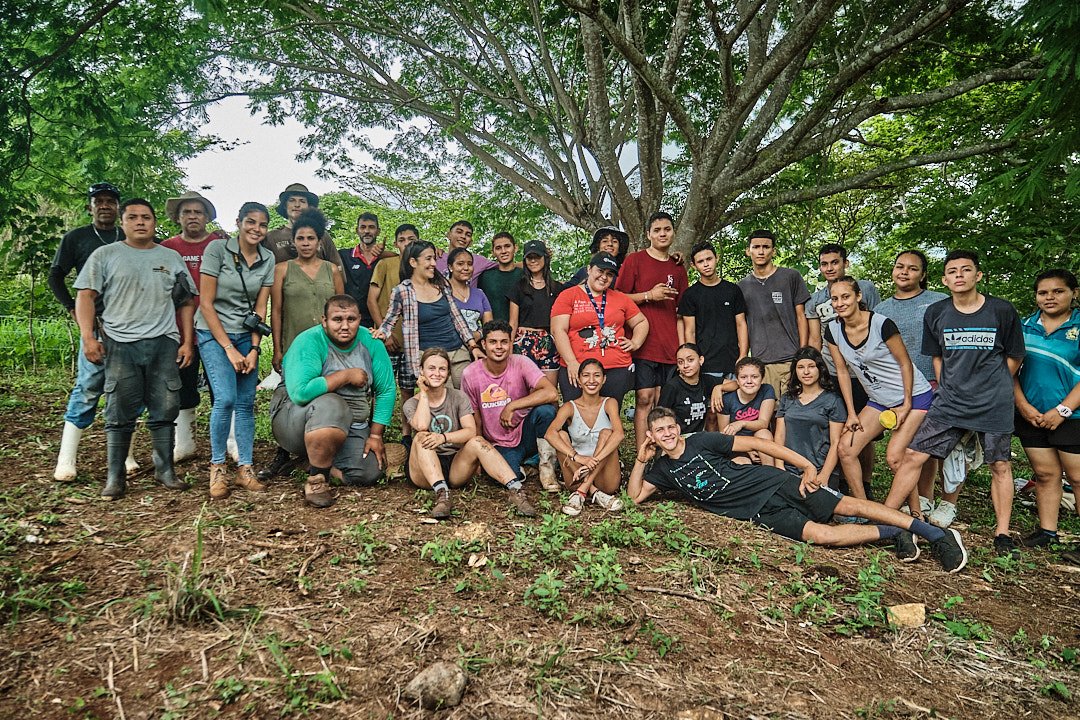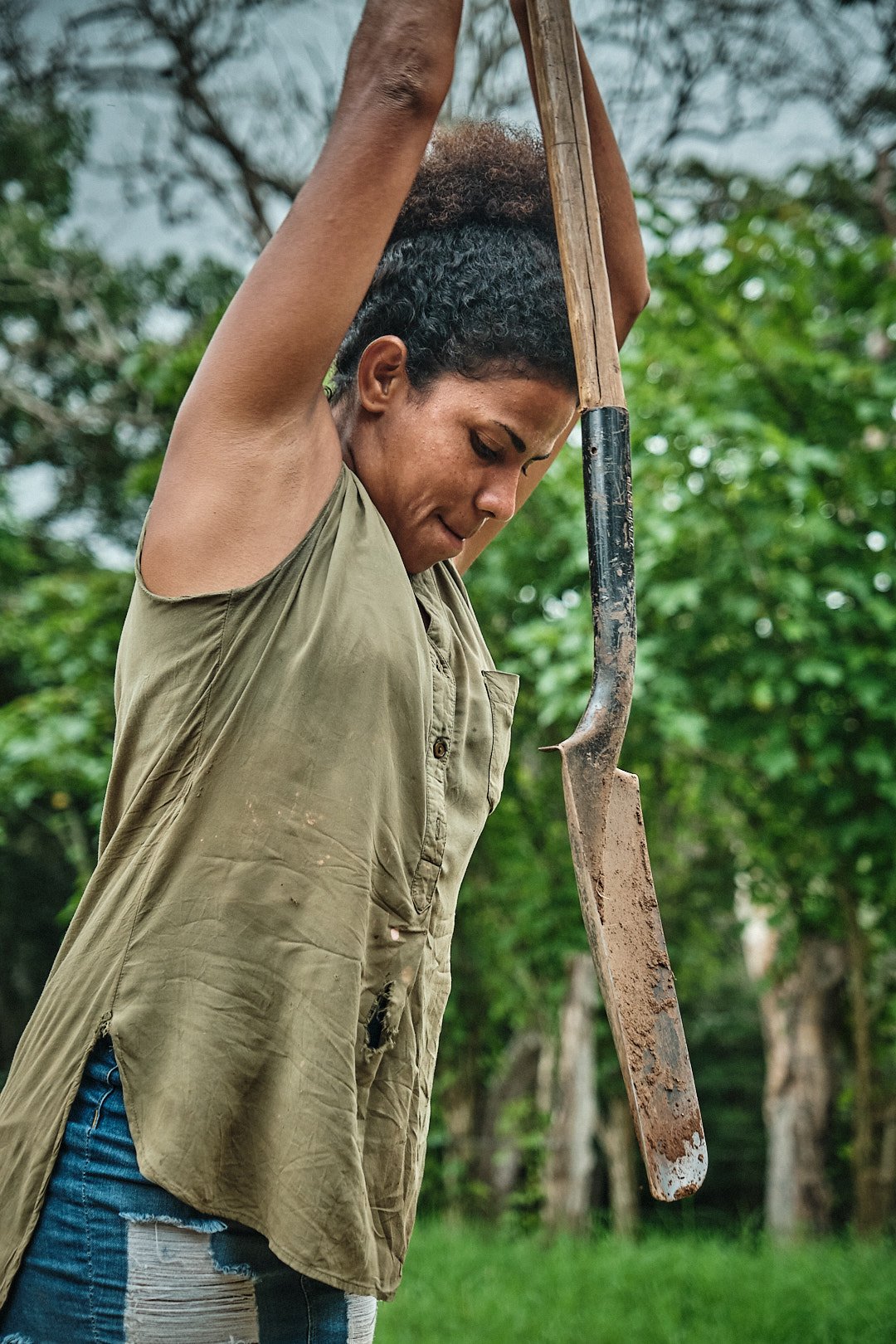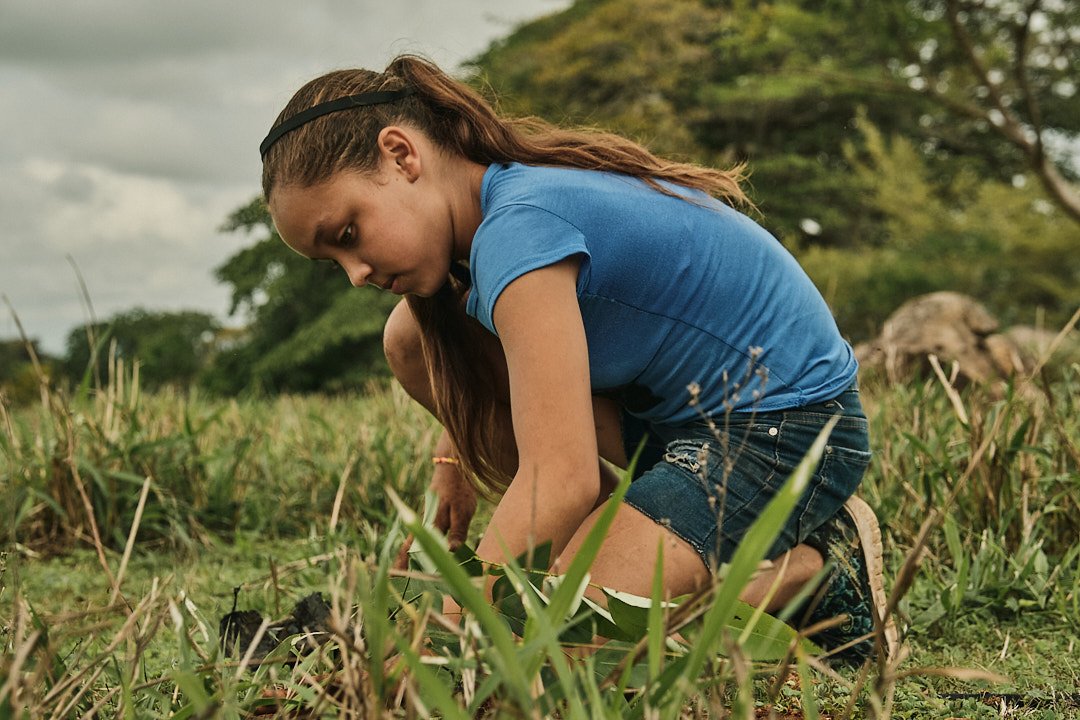Trees For Seas 2022
Trees For Seas Coordinator Alexandra Paniagua.
Alexandra Paniagua is our Reforestation Coordinator for the 2022 tree planting season. Alexandra has worked as a researcher and coordinator of projects related to climate change mitigation, carbon accounting, and sustainable development. Her Masters thesis was published in the scientific journal, Nature, about carbon storage estimation in Monteverde, Costa Rica.
You can read her study about carbon storage here:
What is AstilleroVerde and what is it's purpose?
AstilleroVerde is the non-profit association of SAILCARGO INC., taking on the social and environmental responsibility of the company. AstilleroVerde has a number of different programs and one of them is Trees for Seas, our reforestation program. One of the objectives of this program is to replace the trees used to build Ceiba and also sequester carbon. The second objective is to restore ecological functions in the Bellbird Biological Corridor, which is the area we are working in and where we are located. The third objective is to promote community resilience and empowerment.
How did the tree planting go this year?
We just finished it a couple of weeks ago and it went really well. This year, the goal was to plant 4000 trees and it went according to the plan, so I'm very happy with the result. We had a work team of eight people planting 4000 native trees over a period of six weeks. We also had the help of students and around 100 volunteers this season – which was really great.
Can you tell me a bit more about the workers and the volunteers involved?
This year we planted in four different sites of the middle area and the low area of the Bellbird Biological Corridor. One of the sites we planted was a farm where we had a reforestation activity with kids from the local community and farm workers. We had a couple of people come to help us from SAILCARGO INC as well. There's another farm located in Juras. We worked with the local high school Liceo de Chomes and had a reforestation activity with about 20 of the kids. We had the opportunity to talk about the Bellbird Biological Corridor and teach them the importance of protecting the environment and the ecosystems that trees provide us. So they learned a lot! The teacher was really happy. For the kids, it was a different day for them as well, to have the opportunity to be in nature, outside of the classroom. It was a really good experience for us and for them.
Why does Astilleroverde involve children in the tree-planting? Why is that important?
Firstly, environmental sustainability – I think it's very important to take advantage of these projects to create space to promote awareness of all the plantation actions and to teach the local community, to involve the local community. This project cannot be isolated. It needs to be part of the community, because we are planting trees in this community and the community needs to learn to care and protect these trees. Young Costa Ricans are the future – so we need to use this project as the platform to teach them, to create awareness and to promote environmental protection.
Can you tell me a little bit more about the trees you were planting?
AstilleroVerde has established a tree nursery and this year we produced around 3,600 trees, all of them native to the lowlands. Our staff collected trees from the forest, from this ecosystem. So the trees are native to the tropical dry forest. We have about 50 different species, including some varieties of fruit trees.
What follow up care do you do to ensure as many trees survive as possible?
I think the process before planting is very important. We use different techniques in our tree nurseries, so we incorporate 50% of compost for the seedlings in our nurseries - to give them more nutrients and a greater chance of survival over time. We also plant the trees at the beginning of the rainy season, because they will get regular rain water over the next six months. After six months, we transition to a monitoring program, to evaluate the survival rate of the trees that we planted. We have a database where we note exactly where each tree is planted and we use tree tags with unique numbers and the GPS location of each tree.
The partnerships we have with farmers is another very important part of this process. We work with two farms that are part of a program to develop a low carbon strategy for livestock. It's very important to get in contact and work with these kinds of farmers who are aware of the environment and are already taking action to reduce emissions, to protect the environment and to plant more trees on their farms. They are going to be committed, they are going to protect the trees, they are going to take care of them. For example, one of the farms we are working with has a biological corridor within their farm, so one of the strategies we implemented was to increase the biological corridor that was already there. So we weren't transforming pastoral lands into forest. They want to make this transition, they are also implementing an ecotourist project on their farm, so they want more forest, to attract more animals and birds there. So that is key for us, to continue working with people like this, who are working in a sustainable way, not in a conventional way.
How are the trees from last year and the year before doing?
The trees in 2020 were planted in Monte Verde. We went there recently with a member of Plant for the Planet and those trees are doing really well. The land owner is very involved and he is taking care of the trees, so those trees have maintenance. The ecosystem conditions there in Monte Verde are special because there are a lot of forests there. It's rain forest - so most of the year it is rainy. Last year, the trees planted here in the dry forest also had a good survival rate – 69% - which is lower than the other area, but the dry forest is quite different. 50% survival rate in the tropical dry forest is good. We went to the field to monitor the different species of trees, around about 150 trees last year and then we got rain. So the trees are going well.
Why is this project so important?
Planting trees, is one of the quickest solutions to face the climate crises, due to the potential the trees have to absorb carbon from the atmosphere. But it's not just planting trees. We need to back this with science. To convert the good intentions into lasting forests in the long term. It's a challenge, because it's not easy. It's the process before and after the planting that's important. It's taking care of the seedlings, the maintenance afterwards that is required after the tree is planted, to complete it's potential contribution in the long term. Also involving the community, because the contribution is not only an environmental contribution, there are also social and economic benefits. We need to see planting trees or reforestation projects as holisitic. Involving the community is fundamental, as is environmental education and creating awareness amongst young people, especially in these vulnerable communities, where they don't have access to environmental education. What we are doing is making a difference in their lives and giving them access to something they didn't have before. So Trees for Seas has the opportunity to make a real impact, not just because we are planting trees, but because we are educating people and because we are helping farmers to reach their goals to reduce emissions.
What has the community response been?
The farmers we worked with this year are so involved with the process. We used their cars to bring our trees from our nursery to their farm. We shared resources. They also provided workers to help us plant the trees, they provided tools, which was really helpful for us. It made the work easier and faster as well. The response from the community has been amazing. We hired six people from the community this season for six weeks, so we are also providing jobs. Those are seasonal jobs, but it's a way for them to receive extra income. The response from the kids in the high school has been really great, they were so happy and they really wanted to have more activities. We are planning to have another activity with them soon.
I really liked the activity with the students from the high school. It was amazing to see them happy and to see them very involved. They planted 500 trees – can you imagine that? They were with us all morning and they wanted to stay for longer.
Video credits: Daniel Aguilar Liriano
This interview was edited for length and clarity.
Interview conducted and edited by Hannah Southcott




